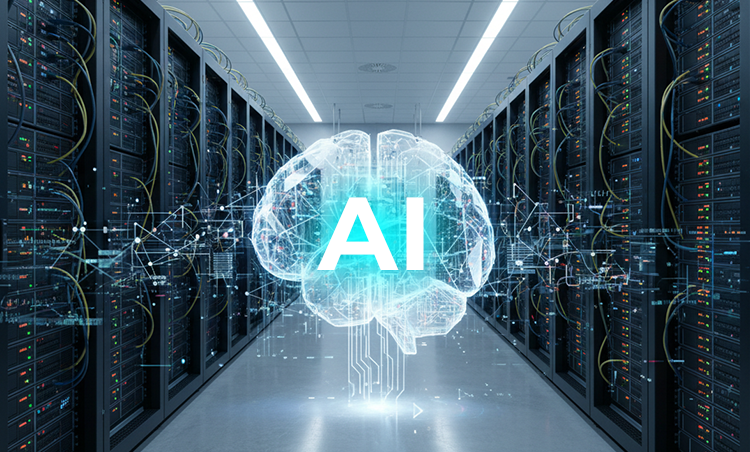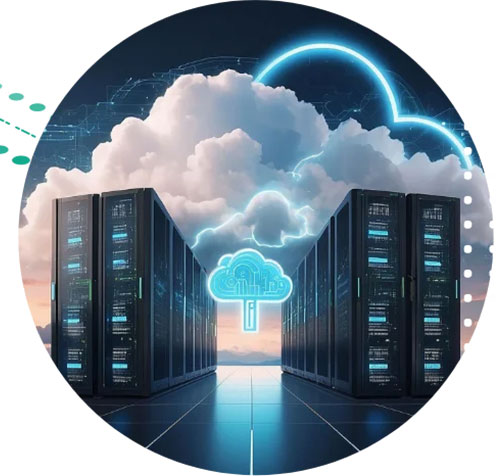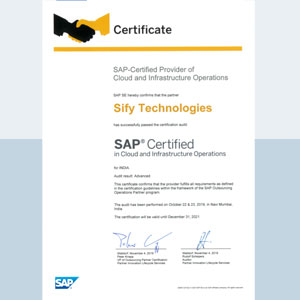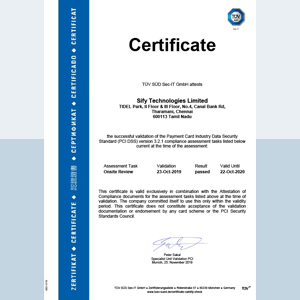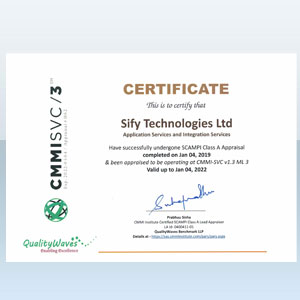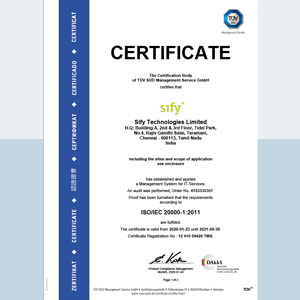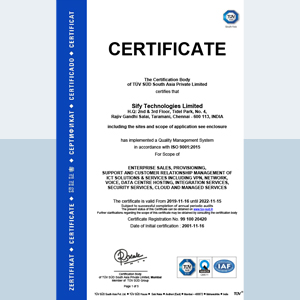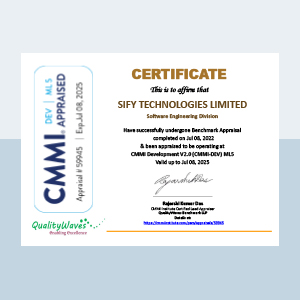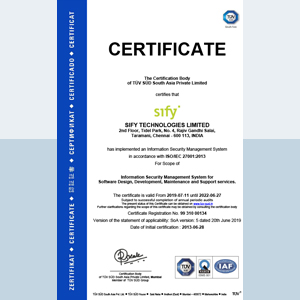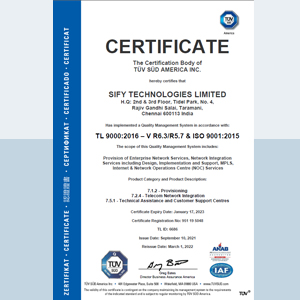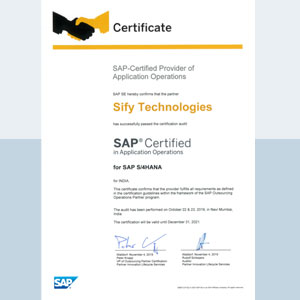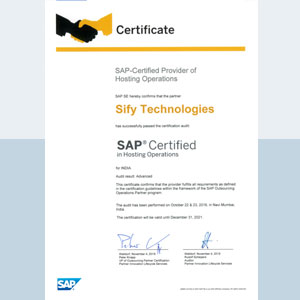Table of contents
You don’t undergo a cloud transformation by “lifting and shifting” faster than the next enterprise. Transformation happens when the cloud stops being a place to host apps and becomes a dynamic, intelligent fabric – an environment that learns from data, predicts failures before they occur, and optimizes cost and performance continuously.
Many leadership teams are discovering a new reality: cloud – which once felt like a competitive advantage is beginning to plateau. Costs are no longer as predictable as promised. Security remains reactive and stretched. Observability delivers few actionable insights. And hybrid and multi-cloud landscapes have grown too complex for manual control to keep up.
This isn’t a failure of cloud strategy – it’s a natural maturity curve. The next chapter is not about layering on more dashboards or automation scripts. It’s about making the cloud itself intelligent.
AI-powered cloud services shift the dynamic. For example, it brings predictability to migration by analyzing workload dependencies, forecasting capacity needs, and flagging risks before cutover. It can also recommend refactoring priorities based on usage, security posture, or data sensitivity, helping teams migrate smarter, not faster. The goal is not just to move workloads, but to make them behave intelligently once they move.
Explore some of the top risks in enterprise cloud migration and how you can mitigate them.
This guide lays out a pragmatic operating plan to upgrade your current infrastructure with AI-powered cloud capabilities that improve operational efficiency, strengthen security, and maximize return on cloud investment.
What do we mean by AI-powered cloud services?
AI-powered cloud services refer to the usage of artificial intelligence to make the cloud itself smarter, more secure, efficient, and self-optimizing. It embeds intelligence within the fabric of the cloud to automate and improve operations. AI-powered cloud isn’t a shiny new toolset or yet another abstraction layer. It’s a different operating model.
AI models ingest massive telemetry streams across compute, network, and storage. They predict capacity needs, detect anomalies in real time, and automatically orchestrate workloads to maintain performance and compliance. Enterprises that integrate AI-powered observability, dependency mapping, and automated testing early see faster ROI and far fewer post-migration surprises.
The result: clouds that self-heal, self-tune, and continuously align resource allocation to demand – all while keeping energy usage and operational costs in check. It’s no longer infrastructure that you manage; it’s infrastructure that manages itself intelligently, guided by guardrails set at the business and governance level.
These aren’t abstract benefits. They’re measurable through clear SLOs (business-level objectives like availability, efficiency, and security posture) and the SLIs that support them, like latency, throughput, and error rates.
Examples of AI in cloud operations
- Predictive operations that sense and act on potential issues ahead of time. Instead of reacting to outages or spikes, the system anticipates them through telemetry and trend learning.
- Intelligent workload placement that balances performance, cost, compliance, and sustainability dynamically. This transforms deployment strategy from fixed architecture to living architecture.
- Adaptive security that monitors behavior rather than signatures alone. It correlates signals across multi-cloud surfaces, making the organization more resilient to evolving threats.
- Cognitive observability that transforms endless signals into narratives. It doesn’t just show what’s wrong; it shows why, where, and how to fix it – often before humans are even informed.
- Sustainability optimization that operates silently in the background, aligning infrastructure performance with energy and carbon goals without requiring manual oversight.
Together, these capabilities turn the cloud from a passive hosting environment into an adaptive, self-regulating ecosystem that delivers predictable business outcomes.
The new mandate for leaders: cloud + AI as competitive advantage
Escaping the cost trap starts with shared visibility. When leaders can see performance, risk signals, and unit economics, they can steer transformation objectively.
CEO / CFO: Move from infrastructure reports to outcome scoreboards. Track cost-to-serve, revenue per workload, and ROI per cloud unit. Align budgets to measurable business metrics, not vague modernization goals.
CIO / CTO: Adopt AI for smarter operations, not just smarter apps. Standardize telemetry pipelines, implement policy-as-code, and unify observability across environments. Decide where you prioritize control (private cloud, edge) versus agility (public cloud, GPUaaS).
CISO: Treat security as a live control system. Identity-first access, continuous posture checks, and AI-driven anomaly detection should replace manual audits. AI can spot subtle configuration drifts that humans miss.
COO: Integrate cost, performance, and security metrics into a single operational view. When everyone works from the same facts, decisions become faster – scale what works, fix what doesn’t, and retire the rest.
In practice, this shifts cloud from a drifting cost center to an intelligent, measurable portfolio of services that evolve in sync with business needs.
How AI optimizes cloud outcomes
Some unique use cases include:
- Cloud cost optimization and turning overspend into opportunity
Most enterprises carry years of “elastic sprawl”: VMs sized for last year’s traffic, storage you never tiered, GPU clusters idling, and two data pipelines doing the same job. Cutting line items won’t fix that.AI transforms cost management from reactive to predictive by using workload telemetry to forecast demand, rightsize resources, and flag anomalies before the bill arrives.Each layer of your cloud has both a cost and a risk. When you instrument these layers with AI, you know exactly where money turns into value and which workloads deserve more investment. It helps refine unit economics: cost per workload, cost per transaction, and energy per compute cycle.By correlating cost data with performance and risk, AI creates a live cost governance loop. Finance and engineering finally speak the same language: aligning budget decisions with operational facts instead of assumptions.Two unit economics you should see on a dashboard:- Cost per workload = (compute × time) + (storage × rate) + (egress + management overhead).
- Operational efficiency = uptime × performance ÷ total cost of ownership.
If those numbers don’t exist yet, you’re flying blind.
Learn more about mastering cloud cost optimization in enterprises
- AI observability & intelligent SLOs
Observability is how you run a cloud like a product, not a utility. AI makes it predictive and prescriptive. Every AI-powered system should emit the same fundamental signals – performance, cost, and risk – tied to business outcomes.When AI correlates these signals, it reduces firefighting, highlights waste early, and accelerates decision-making. A single dashboard, reviewed jointly by product, engineering, and finance, becomes the new control room for intelligent operations. - AI-powered multi-cloud strategy to balance control, agility, and intelligence
Different workloads demand different clouds: analytics in one, AI training in another, and customer apps close to edge regions. But multi-cloud sprawl quickly erodes efficiency when policies, costs, and visibility fragment.AI solves this through continuous workload decisioning. It evaluates data in real time, decides the best location for execution, and moves workloads seamlessly. This can mean placing a sensitive financial application closer to a regulated data zone in one hour and shifting an AI training job to a greener, cheaper GPU cluster the next.More importantly, an intelligent multi-cloud strategy isn’t just about optimization – it’s about control without centralization. CXOs get a unified view and decision layer while retaining provider choice, operational flexibility, and business agility.Evaluate how you can design an AI-powered multi-cloud strategy for your enterprise that is efficient and effective. - Cloud security & compliance: continuous intelligence, continuous trust
Most cloud breaches stem from misconfigurations, not malicious code. AI strengthens defense by constantly watching for drift – correlating identity, network, and configuration signals to detect deviations before they cause exposure. Instead of static audits, compliance becomes a live system that self-verifies.AI classifies risks by severity, auto-remediates policy violations, and generates audit-ready evidence on demand. From access controls to data residency, the system continuously learns and adjusts. That’s how enterprises move from reactive compliance to proactive assurance – trust not as a document, but as a measurable, ongoing state of intelligence.
Where to start?
For leaders looking to operationalize these ideas, start with a simple, layered architecture that can evolve intelligently over time. Design around three functional layers and let AI optimize each where it matters most:
- Data layer: Governed pipelines, private connectivity, and a unified feature store feeding observability and compliance data.
- Compute layer: Dynamic scaling across cloud and edge; predictive placement of AI workloads based on performance and residency needs.
- Operations layer: Continuous learning loop — telemetry → AI-driven insights → automated adjustments.
Across all layers, identity-first access, encryption, private endpoints, and policy-as-code remain non-negotiable. This is how AI makes cloud operations not only faster, but safer and more sustainable.
A successful journey often follows a clear rhythm:
- Assess with brutal clarity. Before AI, comes visibility. CXOs need to know where the operational choke points are. This phase sets the transformation agenda.
- Target surgical wins, not sweeping overhauls. Intelligent scaling or automated incident correlation are ideal “first use cases” because they deliver measurable ROI quickly and help build internal confidence.
- Invest in clean telemetry. Intelligence can’t thrive on messy data. Normalize telemetry across silos, and ensure data quality.
- Governance must evolve. AI-powered environments require explainable decisions and auditable actions.
- Scale through iteration. Each intelligent use case feeds the next. Over time, a feedback loop emerges – the system learns, governance tightens, and operational maturity accelerates.
- Engage the human dimension. No intelligent cloud strategy succeeds without human alignment. People give technology direction, trust and accountability.
Why Sify as your cloud partner in the AI era
Sify helps enterprises integrate AI into their cloud backbone – not as an add-on, but as a performance multiplier. CloudInfinit+AI provides access to GPU-as-a-Service (GPUaaS) for compute-intensive workloads like machine learning, deep learning, and analytics, while ensuring secure connectivity across hybrid and multi-cloud setups.
Our AI-ready data center campuses across key metros are engineered for high-density workloads, efficient cooling, and strong network and physical security. They use AI for smarter cooling, power distribution, and capacity planning, reducing energy consumption and improving uptime.
Day-2 operations are covered through managed services that unify hybrid and multi-cloud environments under a single operating model. Identity-first security, encryption with centralized key management, private connectivity, and continuous posture management come built in.
Observability ties cost, performance, and risk together so each service runs to clear SLOs and evidence for audits is generated automatically.
Most importantly, the approach is outcomes-driven. Sify helps enterprises get the maximum value from their cloud investment by combining AI-driven operations with secure, scalable infrastructure, thereby enabling faster innovation, higher availability, and better economics.
Ready to make AI real?
Turn your cloud from a cost center into an intelligent platform that’s secure, observable, and optimized for business outcomes. Connect with Sify today.







